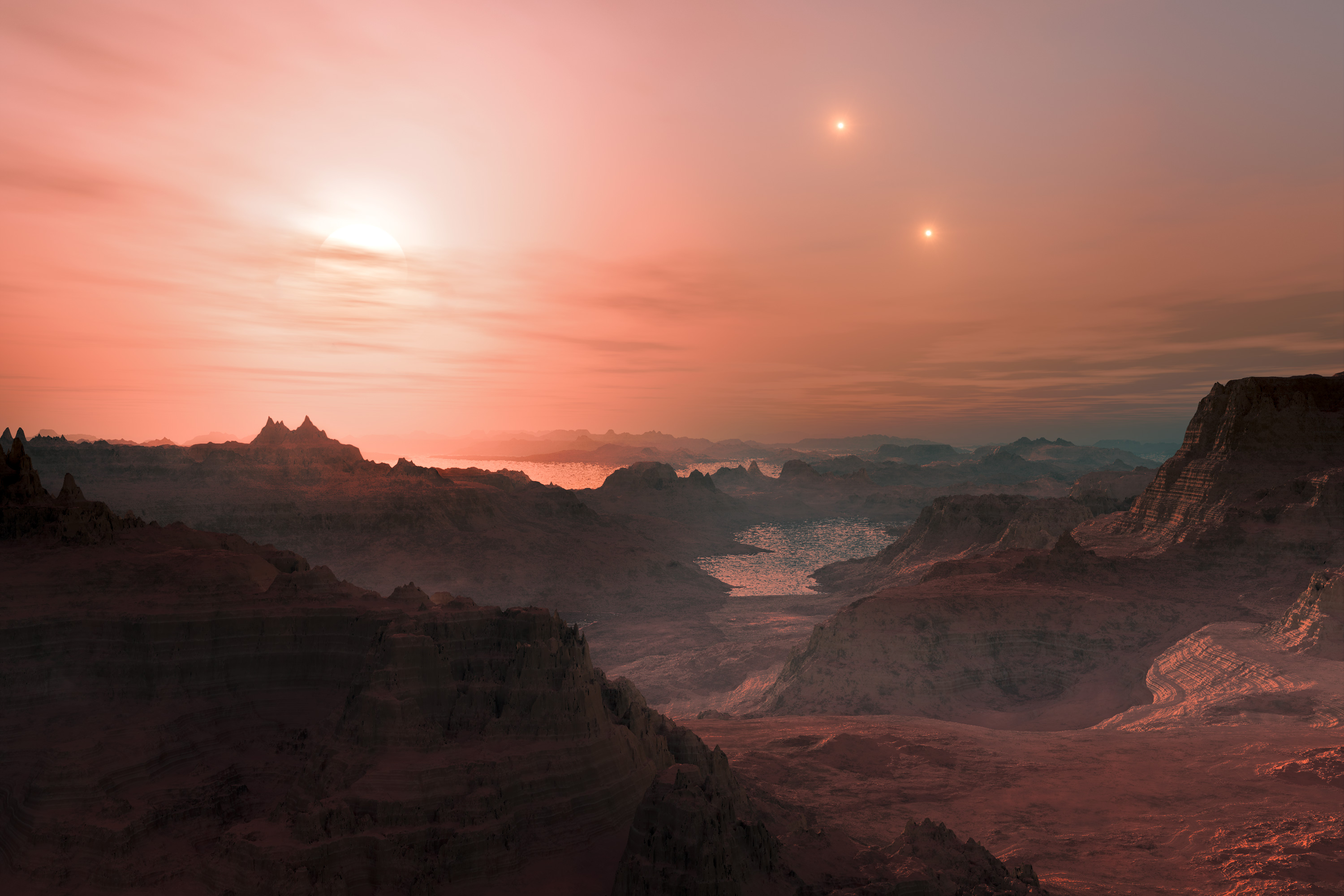Suitable star systems
An understanding of planetary habitability begins with stars. While bodies that are generally Earth-like may be plentiful, it is just as important that their larger system be agreeable to life. Under the auspices of SETI’s Project Phoenix, scientists Margaret Turnbull and Jill Tarter developed the “HabCat” (or Catalogue of Habitable Stellar Systems) in 2002. The catalogue was formed by winnowing the nearly 120,000 stars of the larger Hipparcos Catalogue into a core group of 17,000 “HabStars”, and the selection criteria that were used provide a good starting point for understanding which astrophysical factors are necessary to habitable planets.
Spectral class
The spectral class of a star indicates its photospheric temperature, which (for main-sequence stars) correlates to overall mass. The appropriate spectral range for “HabStars” is presently considered to be “early F” or “G”, to “mid-K”. This corresponds to temperatures of a little more than 7,000 K down to a little more than 4,000 K; the Sun, a G2 star, is well within these bounds. “Middle-class” stars of this sort have a number of characteristics considered important to planetary habitability:
They live at least a few billion years, allowing life a chance to evolve. More luminous main-sequence stars of the “O”, “B”, and “A” classes usually live less than a billion years and in exceptional cases less than 10 million.
They emit enough high-frequency ultraviolet radiation to trigger important atmospheric dynamics such as ozone formation, but not so much that ionisation destroys incipient life.
Liquid water may exist on the surface of planets orbiting them at a distance that does not induce tidal locking (see next section and 3.2). K Spectrum stars may be able to support life for long periods, far longer than the Sun.
This spectral range probably accounts for between 5% and 10% of stars in the local Milky Way galaxy. Whether fainter late K and M class red dwarf stars are also suitable hosts for habitable planets is perhaps the most important open question in the entire field of planetary habitability given their prevalence (habitability of red dwarf systems). Gliese 581 c, a “super-Earth”, has been found orbiting in the “habitable zone” of a red dwarf and may possess liquid water. However it is also possible that a greenhouse effect may render it too hot to support life, while its neighbor, Gliese 581 d, may be a more likely candidate for habitability. In September 2010, the discovery was announced of another planet, Gliese 581 g, in an orbit between these two planets. However, reviews of the discovery have placed the existence of this planet in doubt, and it is currently listed as “unconfirmed”. In September 2012, the discovery of two planets orbiting Gliese 163 was announced. One of the planets, Gliese 163 c, about 6.9 times the mass of Earth and somewhat hotter, was considered to be within the habitable zone.
A recent study suggests that cooler stars that emit more light in the infrared and near infrared may actually host warmer planets with less ice and incidence of snowball states. These wavelengths are absorbed by their planets’ ice and greenhouse gases and remain warmer.
